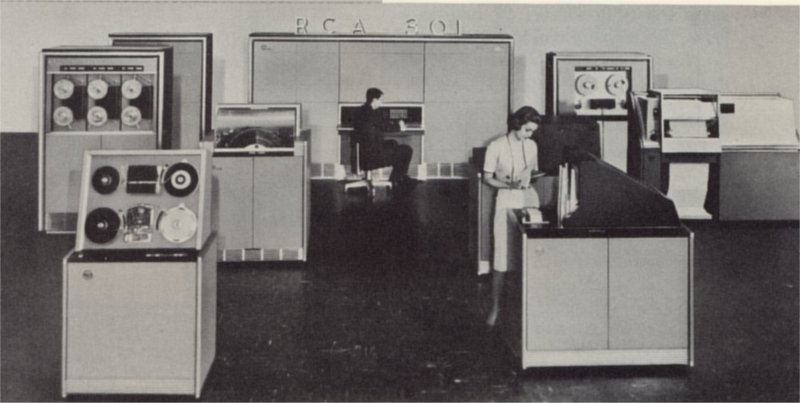
RCA
Radio Corporation of America
RCA 301
1960-1963

| L'histoire des
ordinateurs électroniques RCA remonte à l'engagement de la compagnie
comme fabricant de composants pour l'ENIAC. Le premier ordinateur commercial vendu fut le BIZMAC, suivi par le RCA501 auquel le RCA 301 est apparenté. RCA développa ensuite simultanément la machine scientifique RCA 601, de la classe du 7090 IBM et le RCA3301 qui devait être une machine de gestion au-dessus du 301. RCA interrompit en 1964 le développement du 3301 pour se lancer dans une gamme similaire à l'IBM 360, la série Spectra dont seront dérivés les machines Hitachi et Siemens. |
RCA was involved in electronic computers from
ENAC times as a supplier of components. Its first independent entry in the business was the BIZMAC followed by the RCA501. The RCA301 belongs to the family pioneered by the 501, but is cheaper/ RCA developed then simultaneously a fast scientific computer the RCA601, that attempts to compete with the IBM 7090 and the RCA3301 an upgrade of the 301. Those lines were interrupted in 1964, when RCA launched the series Spectra, to compete with IBM S/360. Hitachi and Siemens are in fact derived from Spectra machines |
|
|
Outre par la compagnie des Machines Bull, le RCA 301 fut aussi vendu par English Electric (UK), par Siemens en Allemagne Fédérale et par Hitachi (Japan) |
In adition to Compagnie des Machines Bull, the RCA301 was licensed to English Electric (then ICL) in UK and the Commonwealth, to Siemens in Germany (GFR), and to Hitachi. |
|
Le RCA 301 était doté de périphériques développés par RCA:
En outre d'autres périphériques non fabriqués par RCA avaient été connectés au RCA 301
|
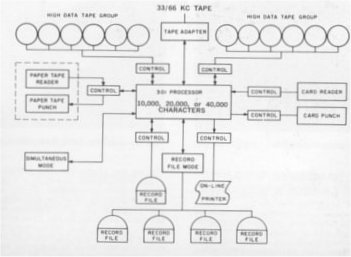
|
RCA had developed
for the 301 some specific devices:
Other devices were also connected!
Among the non-RCA designed peripherals connected to RCA 301 were:
|
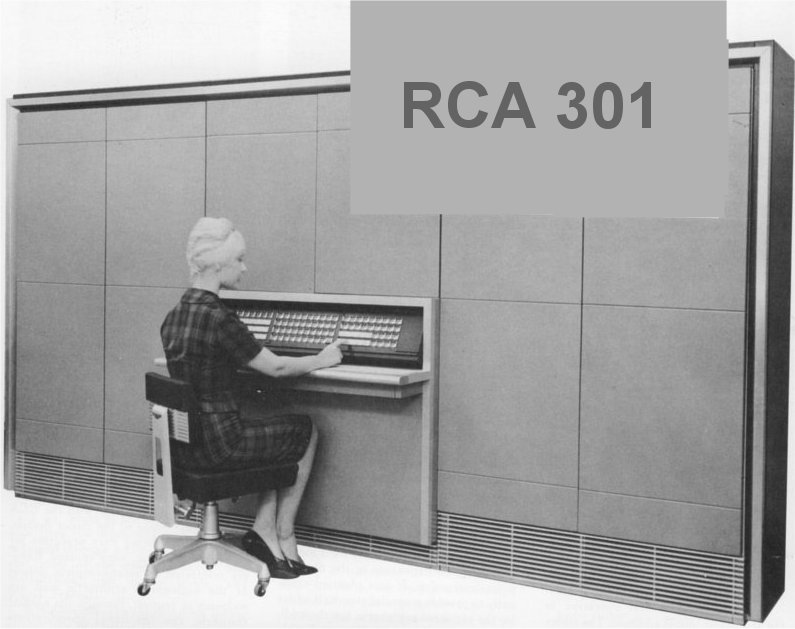
ARCHITECTURE
The RCA 301 processor instructions are fixed length of 60-bits (organized as 10 characters of 6 bits). It includes an Op-code (6-bits), an N field storing a complementary Op-code or an operand field length and two address fields A and B storing 4 characters central memory addresses. The standard RCA 301 instruction repertoire uses 48 op-codes.
Data are stored as variable length strings of decimal numbers or alphanumeric numeric characters of 6-bits.
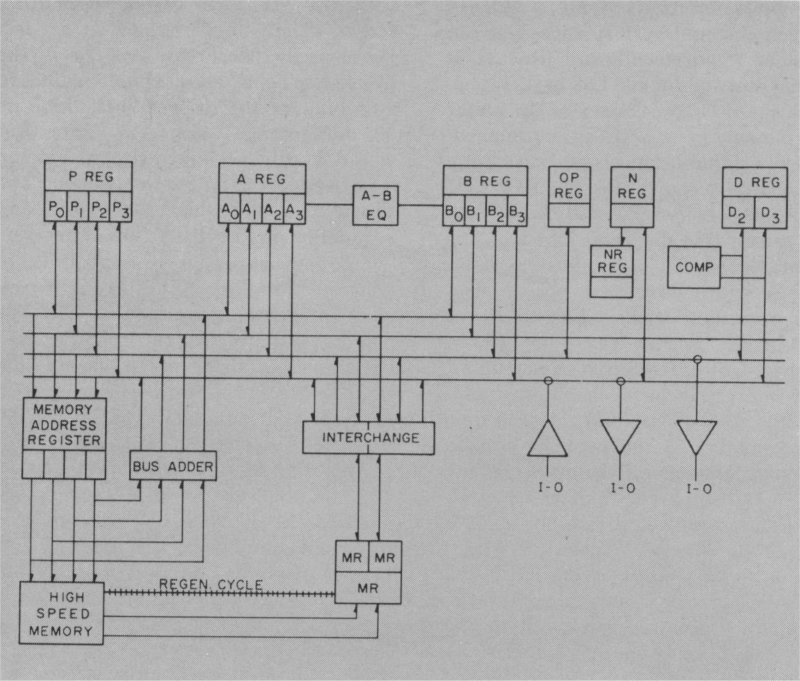
Scientific Unit (option)
The RCA 301 scientific computer includes a 35x high speed arithmetic unit that adds 10 new instructions to the 301 instruction set. The data formats in those instructions are decimal fixed-point on 8 digits and floating point on 10 digits (2 of them being an exponent). In addition, index registers can be specified in the N-field.
Hardware includes an addressable upper accumulator and lower accumulator, two non addressable arithmetic registers ans a parallel adder. The 3 index registers and the 3 increment registers are located in ùmain memory.
The scientific option is field retrofittable (40 hours working time). The unit occupies 12 rows (a half rack).
The scientific software includes a subroutine library, UMAC an algebraic language , and FORTRAN.
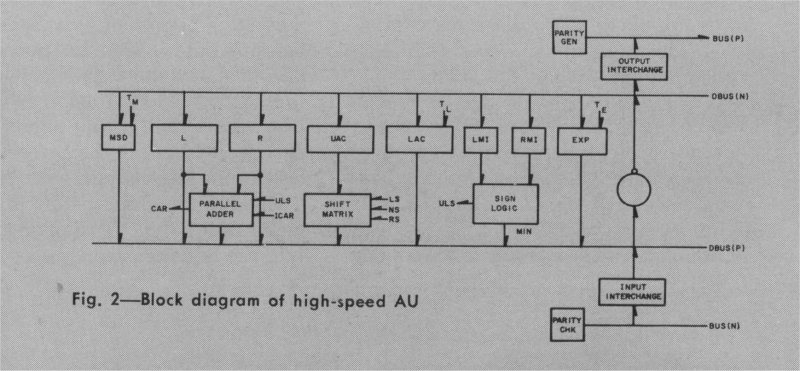
| The arithmetic unit registers are MSD (most significant digit), L and R left and right operand registers, UAC upper accumulator, LAC lower accumulator, LMI and RMI storing the sign of operands, EXP exponent register. |
Technology
The RCA301 is built around a central memory built from magnetic cores. Its logic circuits use solid state circuits made from discrete transistors and diodes.
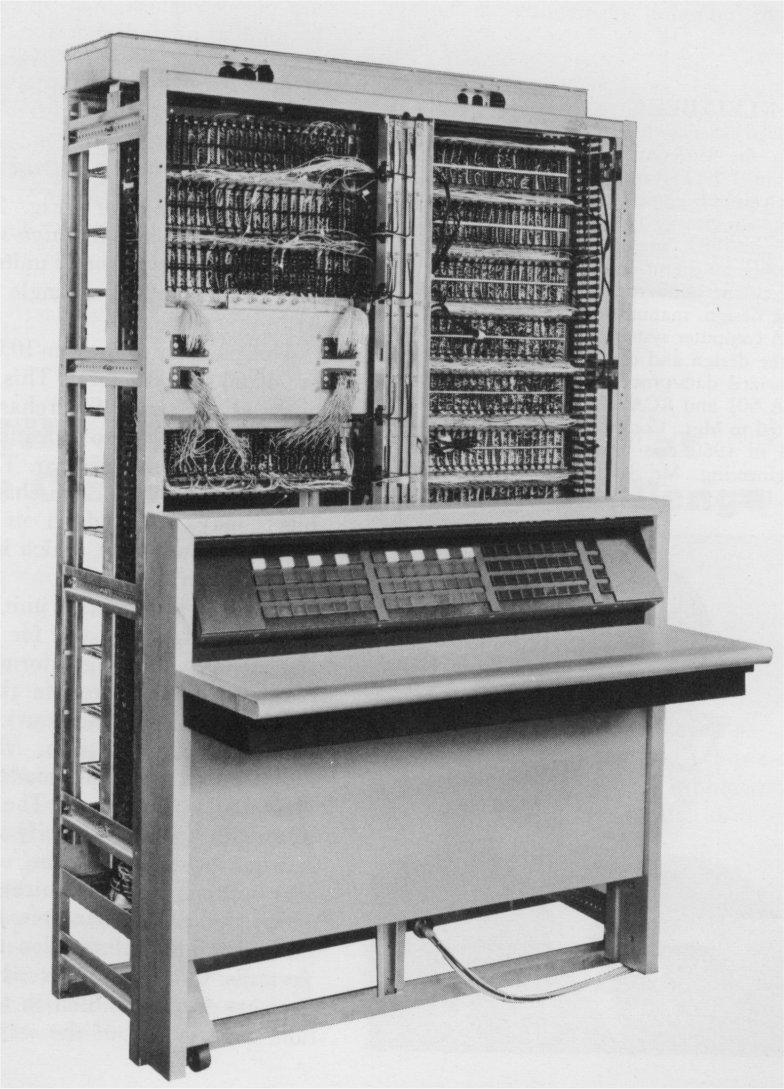
PERFORMANCES
|
memory cycle time |
7 microseconds |
Bibliography